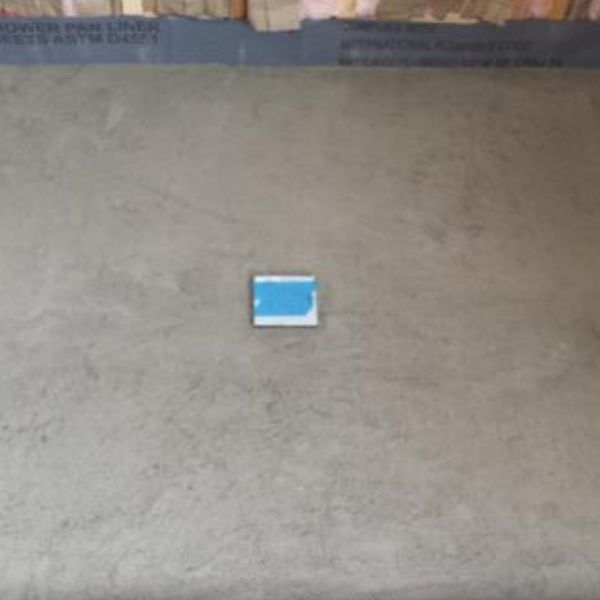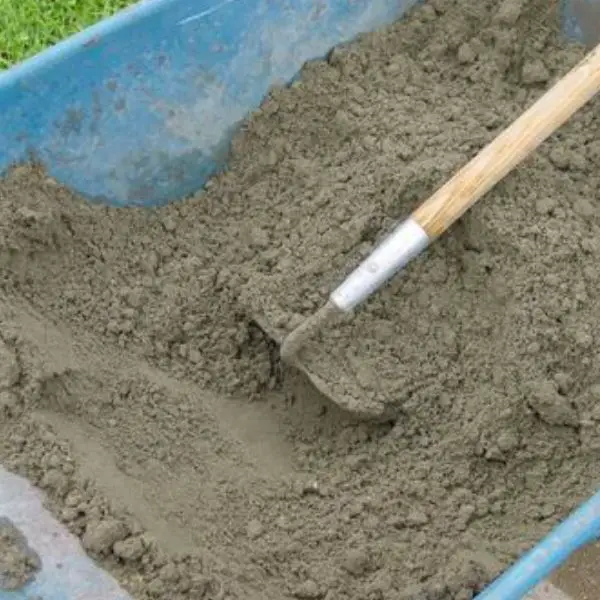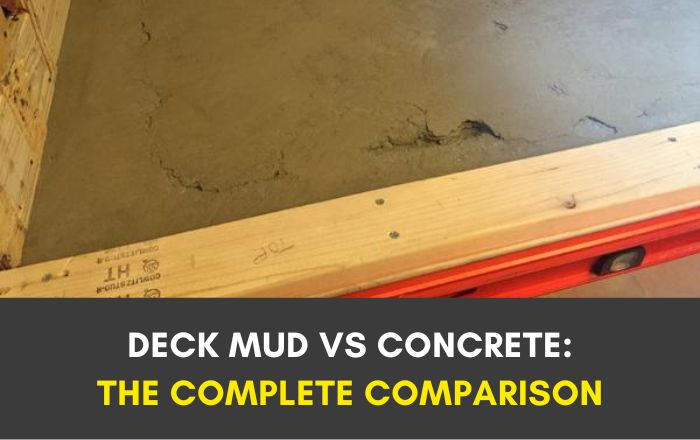Deck mud and concrete are both used in building and fixing things at home, but they’re different. Even though people often mix up their names, they’re used for different things.
Deck mud, also known as dry pack mortar, is a mix of sand, cement, and water. It’s good for small repairs, filling gaps, building shower bases, and fixing tiles and bricks. It’s more for smaller, specific jobs.
Concrete, on the other hand, is a mix of cement, water, and limestone chips. It’s really strong and is mainly used for building walls and foundations. It’s the go-to material for bigger construction jobs.
Even though deck mud and concrete might seem similar, they have different uses and strengths. It’s not a good idea to use them interchangeably because it might not be strong enough for what you need.
What is Meant By Deck Mud?
Deck mud, also known as dry pack mortar or floor mud, is a mixture used in construction. It’s made by mixing sand, cement, and water.
This mix is often used for tasks like installing shower tubs, laying tiles and bricks, and fixing small imperfections in a surface.
The usual mix for deck mud is one part cement to four parts sand. You add just enough water to make it stick together.
If you squeeze it in your hand, it should form a ball without falling apart or getting too squishy. This mixture is strong, with a good ability to withstand pressure.
You can vary the mix a bit, using different amounts of sand to cement, like one part cement to two and a half, five, or even six parts sand.
The amount of water you need to add depends on how dry or wet the sand is. Dry sand will need more water, and wet sand will need less.
Advantages of Deck Mud
- Deck mud can be used both indoors and outdoors, making it versatile.
- It has a thicker consistency, which is great for creating slopes and stamping patterns.
- You don’t have to mix the cement and sand right at the construction site, which saves time.
- It’s especially useful for big commercial projects because of its smooth and workable texture.

What is Meant By Concrete?
The concrete is a common building material made by mixing sand, small stones (gravel), water, and cement.
The strength of the concrete depends on how much of each ingredient you use. When cement and water mix, they go through a process called hydration, which makes the concrete hard. Adding too much water can make the concrete weak.
Concrete is used to make blocks for building things like houses and other structures. These concrete blocks can have spaces for putting in wooden beams.
The concrete’s density can change based on things like what kind of small stones you use, how much water you add, and whether you mix in any air with things like detergents.
There are different types of concrete for different jobs, like roofing. Each type has different materials in it, so they have different densities and strengths.
There are tables that show these differences. For most projects, like decks, you can buy bags of pre-mixed concrete. Just add water and mix it. These mixes are made to hold up a lot of weight.
For roofs, you can lay a waterproof layer on top of the concrete, and then add foam insulation. You can also pour a special type of lightweight concrete on a roof to both support it and insulate it.
Sometimes, concrete is used on steel frame decks. The concrete and the metal work together to hold up weight.
The steel panels are often designed to connect well with the concrete. For insulation on these types of decks, you can either attach foam sheets or pour a special insulating concrete.
Advantages Of Concrete
- Concrete is a great choice for decking because it’s very flexible in design. You can shape it into different patterns and make it look like stone, bricks, or even tiles.
- One of the best things about concrete is that it lasts a long time. It gets stronger and tougher as it dries. This makes it really good at standing up to bad weather, bugs, and a lot of walking and use.
- If you’re looking for a deck material that doesn’t need much care, concrete is a great choice. It’s easy to look after. You can usually just clean it with a hose.
- Lastly, concrete gives you good value for your money. You can make a lot of different designs with just one batch. And after it’s set up, you won’t have to spend much on keeping it in good shape.

How To Use Concrete?
Here’s a simple way to mix and use concrete:
- Mix the concrete in a wheelbarrow using a hoe. The mix should be easy to move and able to fill gaps, but not too wet or soupy. Hoes work better than spades for mixing concrete. If you want to save time, you can rent a concrete mixer. Just make sure to follow the instructions on the bag.
- You can mix your own concrete by combining 3 parts gravel, 2 parts sand, and 1 part cement. This takes a bit more skill and know-how than using pre-mixed bags.
- When making foundations, the bottom of the foundation (the footing) should be as wide as it is thick. Pour the concrete when the temperature is between 50 and 90 degrees Fahrenheit. Use a concrete mix that can handle 5,000 pounds of pressure.
- When you pour half of the concrete into a form tube (like a big cylinder), push it down with a shovel or a piece of rebar to get rid of air pockets. Then, fill the tube with concrete until it overflows a bit, and smooth the top with a trowel.
Difference Between Deck Mud Vs Concrete
Material Differences
Both deck mud and concrete use sand, cement, and water, but they’re not the same. Concrete includes small rocks or gravel, making it really strong for building houses.
Deck mud has less water and is more for sticking tiles and bricks together. So, you use mortar (deck mud) for attaching bricks, but concrete is for the big building jobs.
Strength
Concrete is much stronger than deck mud because it has gravel and rocks in it. This makes concrete about ten times stronger than deck mud.
Concrete also sets faster. So, it’s important not to use deck mud for things that need to be really strong, like house foundations, because it’s not as tough.
Durability
Deck mud is good for sticking things together but doesn’t last as long. You might need to redo it every 40 years because tiles or bricks can start coming loose.
Concrete, however, can last for a very long time without breaking down. It’s made to be super durable because of the extra stuff mixed in it.
Consistency
The mix of water and cement is key. Concrete is wetter but dries hard and firm. Deck mud is thicker but not as strong.
Getting the water amount right is crucial; too much or too little can mess up how well tiles stick to bricks. Concrete’s consistency isn’t as much of a worry in this case.
Usage
Deck mud isn’t strong enough for supporting heavy weights, so don’t use it for building structures. Concrete is the go-to for strong, durable buildings.
But, for things like shower floors or sticking tiles, concrete isn’t ideal because its gravelly mix doesn’t stick well to surfaces.
Cost
Deck mud is cheaper but only lasts about 20 years. Concrete costs more upfront, but it’s a one-time expense because it doesn’t need much upkeep even after decades.
If you use deck mud, you might end up spending more in the long run because you’ll have to replace it every 20-25 years.
Two Distinct Types Of Concrete
There are two main types of concrete: plain concrete and building concrete.
Plain Concrete
This type is used for structures that sit directly on the ground or a flat surface. For example, it’s used for sidewalks, driveways, and the base parts of buildings.
To help it deal with temperature changes and not crack, steel is often added to plain concrete.
Building Concrete
This kind is used for parts of a building that need to hold up a lot of weight, like pillars, beams, and big slabs of concrete.
These parts often have points where they support a lot of weight, so the concrete needs to be really strong. Building concrete is made to handle these heavy loads.
Should I Build The Foundation With Deck Mud?
No, you shouldn’t use deck mud to build a foundation for a building. Deck mud is more like a glue and isn’t strong enough for building structures that need to support a lot of weight.
Concrete is a much better choice for foundations because it’s stable, tough, and can handle heavy loads and pressure. If you use deck mud for the foundation, you might end up having to spend a lot on repairs and rebuilding in as soon as ten years.
How To Store Deck Mud The Correct Way?
To store deck mud properly, you should keep it in a place that’s dry and cool. The best temperature range for storing it is between 40°F (about 4°C) and 90°F (about 32°C).
Make sure it’s not touching concrete or the ground directly. Also, it’s important to put it somewhere shady to protect it from the sun and other kinds of damage.
Ratio Of Materials To Be Used In Concrete And Deck Mud
When mixing concrete and deck mud, the ratio of materials you use can vary based on what you need it for.
Both are available in pre-mixed bags, but if you’re working on a big project, it’s good to know the right mix of cement, sand, and other materials.
For small repairs, people usually mix one part cement with four parts fine sand. But if you need it to be more stable, you might mix cement and sand in a 3:1, 5:1, or even 6:1 ratio. Be careful with how much water you add.
The amount depends on how wet your sand is. If your sand is really dry, you’ll need more water. Just make sure the mix isn’t too wet or too dry.
For strong support in buildings, a common mix is 1 part cement, 3 parts sand, and 6 parts gravel. Another common mix for different uses is 1 part cement, 2 parts sand, and 4 parts gravel. This mix is good for making structures last longer.
For things like dams or water structures that need to be really strong, you can add things like plasticizers and metal bits to the mix. This helps make them stronger and last longer.
How To Apply Deck Mud?
Applying deck mud is pretty straightforward. Here’s what you need to do:
Preparing the Surface
- First, make sure the surface you’re applying it to is strong, clean, and free of any dirt, dust, old cement, wax, oil, curing agents, soaps, coatings, or glue.
- If there’s any residue or stuff like gypsum blocking a good bond, you need to remove it.
- You can make the area smooth by sanding, scraping, or using abrasive tools.
- Before applying deck mud, lightly spray the surface with water, but don’t leave pools of water standing.
- Now, you can spread the deck mud over the area. The best temperature for doing this is between 45°F (7.2°C) and 85°F (29.4°C).
Drying and Curing
- Let the deck mud dry for at least one day. The time it takes to dry can vary based on how porous the surface is, the weather, and the details of your project. But in a humid environment (70°F and 55% humidity), it shouldn’t take more than 24 hours.
- The deck mud will naturally cure and get stronger over 28 days.
- It’s important to give it enough time and the right conditions to dry and cure. If it doesn’t dry properly, it might start cracking after a few days. If that happens, you can use a pre-mixed concrete patch product to fix any cracks. These patches are easy to use and dry quickly.
How To Apply Concrete?
Applying concrete is a bit more challenging than deck mud. Here’s a simple guide on how to do it:
- Just like with deck mud, start by cleaning the area where you’ll be applying the concrete. Make sure it’s free of debris and dirt.
- Use a shovel to spread the concrete mixture over the area.
- After spreading the concrete, use a tool called a darby to level and smooth the surface. Apply gentle pressure to push down the gravel in the concrete.
- Once you’ve spread and leveled the concrete, wait for the extra water on the surface to evaporate. This is an important step before moving on.
Finishing Touches
- Clean up the edges of the concrete area.
- Fill in any cracks or gaps and make sure the joints are fixed.
- Use a trowel or a street Fresno (a long-handled tool) to smooth out the surface.
- Drying: Let the concrete dry for at least one day. The temperature should be similar to what’s best for deck mud (between 45°F and 85°F).
- Remember, working with concrete requires patience and attention to detail, especially during the leveling and finishing stages.
Different Uses of Deck Mud and Concrete
Deck mud and concrete are used for different things because of how they’re made and how strong they are. Each is better for certain jobs:
Deck Mud Uses
- Deck mud is great for laying down floors and making shower bases.
- It’s used for making thick mortar beds, which are like a heavy-duty paste.
- It can be used to stick tiles to floors and to cement walls made of bricks or blocks.
- Builders also use deck mud to cover layers that join things together and to waterproof areas.
- It’s an important part of both home and commercial building projects.
Concrete Uses
- Concrete is really strong, so it’s used for big projects like dams, the bases of buildings, and support for walls.
- It’s also good for making things like fences, roads, sewers, and walkways.
- Concrete is a common choice for building piers (like for bridges), abutments (supporting structures), and ditches.
- Basically, it’s a go-to material for a lot of different construction needs because it’s strong and affordable.
Final Thoughts
Deck mud and concrete are different, and each has its own use in building projects. They’re both important for all kinds of construction work, from big infrastructure projects to fixing up homes and offices. But sometimes, people get them mixed up and use one instead of the other by mistake.
This can lead to wasted time, money, and effort, and it can even make the construction less reliable. It’s really important for anyone working on a building project to know the difference between deck mud and concrete and use them correctly.
Hina Kanwal is the dynamic force behind Deckfaqs.com, blending her expertise in deck design with actionable insights. Known for her engaging content and practical advice, she empowers homeowners to elevate their outdoor spaces. Her passion and knowledge make her a trusted voice in the world of deck-building.







